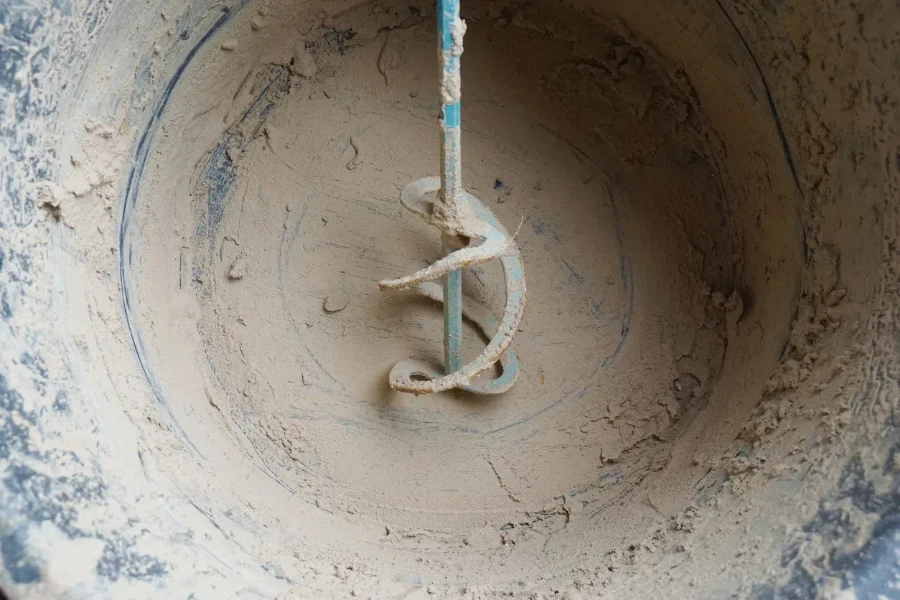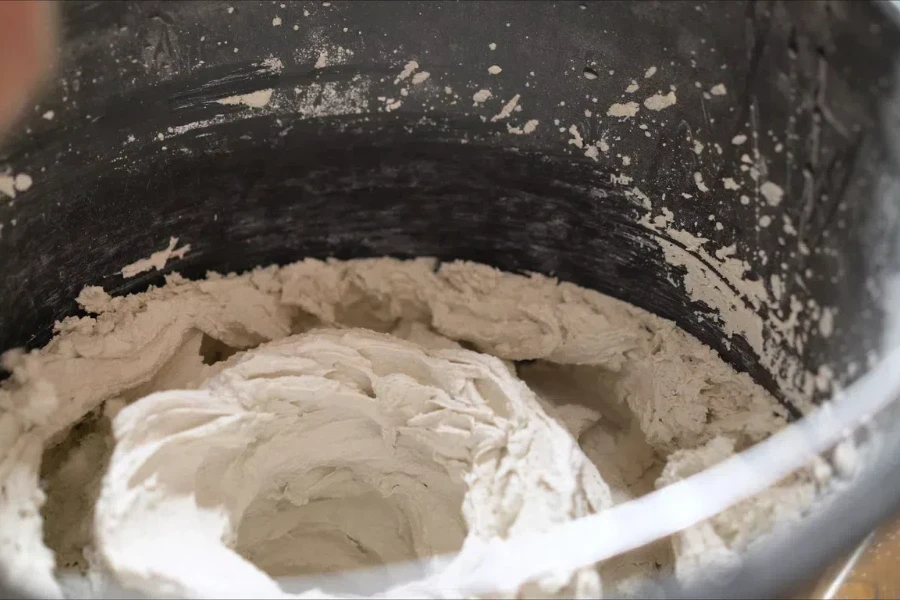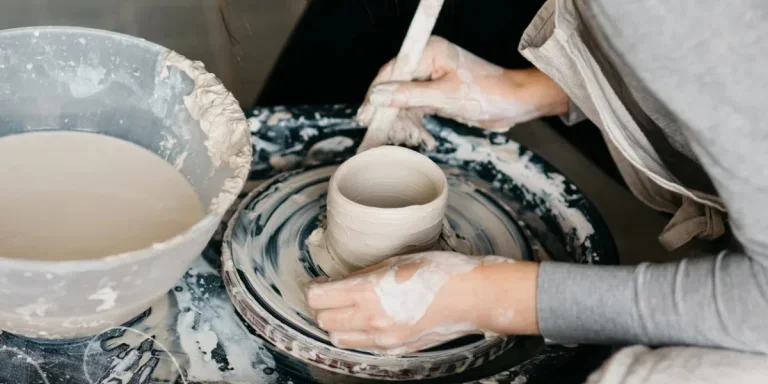At the core of many pottery studios across the globe is the equipment that makes the entire art possible—clay mixers. These machines enable potters to mix custom clay bodies before molding them into either the crockery people use in their daily lives or the clay ornaments that adorn homes and public spaces.
In this article, we’ll look at different types of clay mixers available on the market and then go over the prospects of the global clay products market, including its current market size, key drivers, and projected market growth. The article will then provide an easy buying guide that retailers can use when sourcing clay mixers for their customers.
Table of Contents
What are the different types of clay mixers available today?
Overview of the global clay products and refractories market
6 factors to consider when buying clay mixers
Getting into the mix
What are the different types of clay mixers available today?

There are four main types of clay mixers that buyers will find when shopping for clay mixers. Below, we’ll give you an idea of what these are and their distinctions:
Horizontal shaft hopper mixers
This is considered to be similar to a traditional dough mixer. It comes with an open or lipped hopper or top-opening lid and has a horizontal mixing shaft. This type of mixer tends to have the powder or dry materials added first before the water. Some models come with a reverse switch that allows mixing in the reverse direction of the sharp blades in order to achieve complete mixing.
Vertical-axis rotating-drum Soldner clay mixers
These types of mixers have a chain-driven rotating tub or drum and interior mixer bars that are stationary. The stationary cutting bars mix and blend the clay effectively. Unlike the horizontal mixer, this Soldner mixer works best by adding the water first.
Pugmills
Some have described the pugmill as something akin to an oversized meat grinder! With this machine, moist clay is added into the hopper and propelled by a series of rotating blades into a horizontal barrel. Pugmills usually come with de-airing vacuum attachments that enable them to produce ready-to-use clay.
Combination mixer/pugmills
As the name suggests, the combination mixer/pugmill combines the features of two machines. It has a hopper that blends the dry materials and also reclaims scrap clay or combines scrap with fresh clay. This combination machine eliminates the need to buy a separate mixing machine and pugmill.
Overview of the global clay products and refractories market
According to a report by The Business Research Company, the global clay products and refractories market, which incorporates clay mixers, pottery wheels, industrial clays, ceramic kilns, and pottery glazes, has shown strong growth in recent years. The market value was estimated at US$ 153.63 billion in 2023 and is projected to reach US$ 206.41 billion in 2028, growing at a compound annual growth rate (CAGR) of 5.5%.
The projected growth over the 2023–2028 forecast period is attributed to various factors, including growing demand for artisanal and custom-designed clay products as well as strengthening consumer preference for eco-friendly and sustainable products.
Asia-Pacific emerged as the largest clay products and refractories market in 2023, and Western Europe was the second largest.
6 factors to consider when buying clay mixers

With a variety of clay mixers available on the market, here are some important considerations that retailers need to make when making their buying decisions:
1. Function
The type of clay mixer required will be largely determined by the functions that users would like to perform with the machines. For example, if the target users are likely to mix their own clay, then they can go with a standard mixer. If the users would like the mixer to empty itself after mixing, then a combination mixer/pugmill would be the best option.
For users who need clay that is ready to throw without additional wedging, then standalone de-airing pugmills or mixer/pugmills would be suitable. Since there is growing interest in using recycled clay, users interested in this would be better served by a pugmill or a mixer/pugmill. But there needs to be clarity on what condition the clay needs to be in before processing; it could be stiff, slurry, or bone dry.
2. Capacity

Another consideration that buyers should make when looking at different clay mixers is the varying capacities. It is important to stock the types of clay mixers that would meet the requirements of the target customers in terms of batch mixing sizes, pugging rates, and mixing rates.
All this information is important to know because clay mixers are capital-intensive investments and customers want to ensure they select the ones that provide the most value. Beyond the aforementioned rates, buyers should also assess the batching, unloading, and wedging of the different machines to get an idea of the total clay throughput.
3. Ventilation
Ventilation is a very important process when it comes to clay mixing, as it helps to eliminate dust. It is best to source clay mixers paired with ventilation systems that help to control dust, even if the mixer’s hopper comes with a tight-fitting lid.
Thus, as you search for clay mixers to add to your inventory, you should also consider stocking ventilation systems that customers can use in conjunction with the clay mixers.
4. Electrical requirements
To be able to undertake the intensive work that clay mixers perform, a motor is required, and for larger machines, typically, more electrical power is needed to be drawn. If the users opt for separate mixers and pugmills, then they would need to make provisions for the two machines.
In this regard, it is crucial to consider the scale of work of your target customers, as this will determine the type of systems that would be suited to them. So, knowing whether or not the potential customers are small-scale, middle-scale, or industrial-scale users is important, as this would determine the type of electrical phases they have (single phase for residential and 3-phase for commercial, schools, or larger studios). This, in turn, will have an impact on the types of machine motors best suited to their operations and working environment.
5. Cleaning and storage
Usage of machines is just one aspect of the clay mixing process; cleaning and storage are other crucial components that should be equally considered. Clay mixers typically require cleaning when users are switching from dark to light clays. If this will be part of the customer’s operations, then how easy the machines are to dismantle and clean will be an important consideration.
Equally, ease of storage should be looked into. Some users would like to store their machines for days or weeks at a time, while others will put them away for longer periods (for instance, in schools over summer holidays). It is worth looking into whether the machines can simply be sealed with the clay inside remaining moist.
6. Safety
Last, but certainly not least, buyers should consider the safety features of the various clay mixer options available. Pugmills and mixers are all potentially dangerous machines because of the torque required to blend and move the clay.
It is best to seek out machines that come with robust safety features such as safety shut-offs and guards that help to prevent hands from contacting the mixer’s sharp cutters and dangerous augers. So, check and compare the various safety features, and remember, it’s always better to err on the side of caution!
Getting into the mix

As more and more people seek out artisanal and custom-designed clay products, and as consumer preference for eco-friendly and sustainable products continues to grow, demand for clay mixers will continue to rise.
Whether targeting schools, individual users, or pottery studios as potential customers, you should keep in mind the function, capacity, ventilation, electrical requirements, cleaning and storage, and safety of the machine to ensure you source the right clay mixers.
For an extensive range of clay mixer models to choose from, visit Alibaba.com and compare products from different manufacturers to determine which equipment is best suited for your customers.




